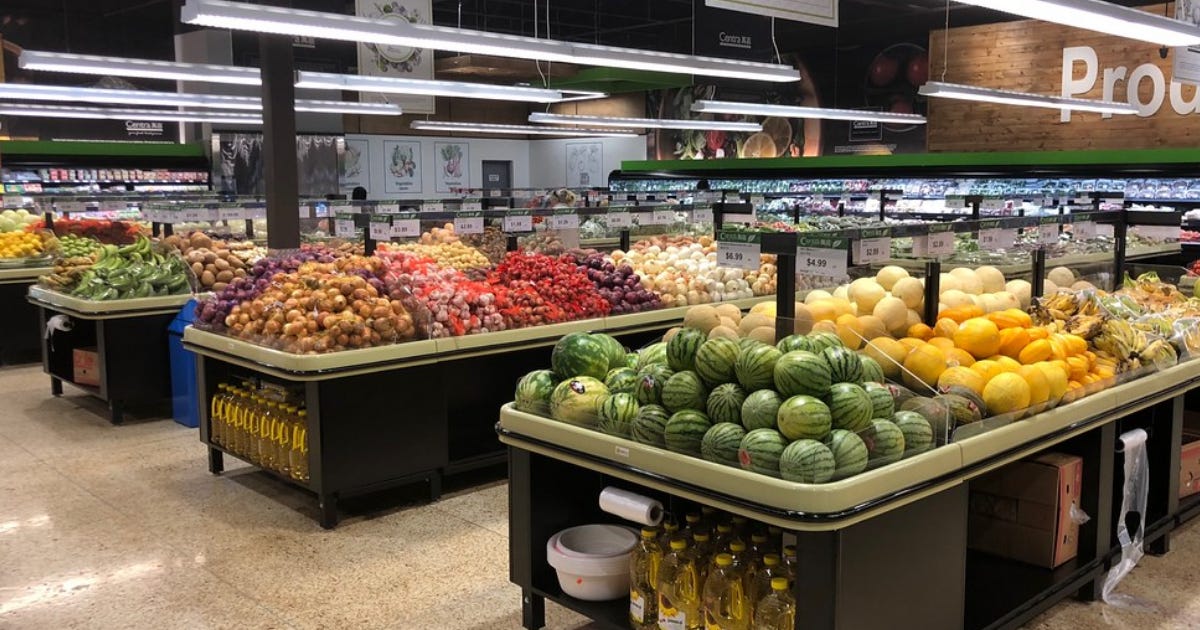OP-ED: The budget that forgot your grocery bill
Sylvain Charlebois writes, "For a government that often talks about food affordability and insecurity, Budget 2025 offers surprisingly little that directly addresses either."
By Sylvain Charlebois
For a government that often talks about food affordability and insecurity, Budget 2025 offers surprisingly little that directly addresses either. There’s no bold food strategy, no affordability roadmap, and no new incentives for domestic food production. Yet, in between the lines, Ottawa has quietly set the stage for some indirect relief — not through grocery subsidies or consumer-facing policies, but through infrastructure, trade, and administrative reforms that could make the food system work a little more efficiently.
The largest signal comes from the government’s $115 billion infrastructure plan, one of its so-called “generational investments.” The new Trade Diversification Corridors Fund aims to modernize ports, railways, and airports — all chronic weak points in Canada’s food supply chain. When bottlenecks ease, goods move faster, and perishable products arrive fresher and cheaper. While no one in Ottawa framed this as a food-price measure, logistics efficiency has long been one of the most effective — and least visible — forms of price control.
Similarly, the creation of a Strategic Exports Office and $76 million to digitalize export certificates at the Canadian Food Inspection Agency may sound technical, but such tools matter. They help processors and exporters cut paperwork delays, reduce spoilage, and restore trust in Canadian food shipments abroad. For a country still navigating trade frictions with the U.S. and China, these updates are pragmatic — and overdue.
On the farm side, $639 million in targeted support for producers and processors through AgriStability top-ups, marketing funds, and biofuel incentives will help shore up margins in a volatile global market. So will an additional $1 billion in Farm Credit Canada lending for trade-affected producers. The permanent reversal of the capital-gains tax increase gives family operators clarity on succession — an essential, if unglamorous, ingredient in long-term food supply stability.
However, even these wins come with caveats. A 15 per cent cut to Agriculture and Agri-Food Canada’s operating budget over three years could undermine the very public research capacity needed to sustain productivity and innovation. And Ottawa’s silence on extended interswitching — a measure that had given shippers access to competing rail lines — means transport costs may remain stubbornly high. For farmers and food manufacturers, those costs ultimately ripple down to the grocery aisle.
Then there’s the elephant that remains firmly in the room: the industrial carbon tax. Despite carve-outs and exceptions, the levy continues to add costs and bureaucracy throughout the agri-food chain — from grain drying and fertilizer production to processing and transportation. It may not appear in this budget’s fine print, but its cumulative impact is deeply felt. Energy-intensive operations, already squeezed by inflation and global competition, face another layer of complexity when trying to plan and price efficiently. For a sector that competes globally, this remains a structural handicap.
Where Budget 2025 speaks most clearly to Canadians’ daily lives is not in agriculture at all. The now-permanent National School Food Program, expected to reach 400,000 children a year, provides tangible relief to households struggling with food budgets — about $800 in annual savings per family, according to government estimates. And the expansion of automatic tax filing for 5.5 million low-income Canadians will ensure benefits flow more reliably to those most affected by rising food prices. These are not structural solutions, but they do make a difference where it counts.
Still, the absence of a broader vision for food affordability stands out. After years of grocery price volatility and public debate about “greedflation,” Canadians might have expected a more direct focus on food resilience — investments in innovation, local processing, or retail transparency. Instead, the government seems to have opted for a quieter, systemic approach: strengthen the arteries of trade and logistics, and trust that efficiency will trickle down to the dinner table.
It may not be the headline Canadians were hoping for, but it’s not meaningless. If ports become less congested, if digital export systems reduce friction, if farmers can plan transitions without punitive taxes — those efficiencies eventually show up in our food bills. The benefits may be indirect, but in a system as complex as Canada’s food economy, indirect can still be impactful.
Budget 2025, then, is not a food budget. But it could help make food a little more affordable — quietly, and over time.
— Sylvain Charlebois is director of the Agri-Food Analytics Lab at Dalhousie University, co-host of The Food Professor Podcast and visiting scholar at McGill University.



That's if the government actually does implement the measures that the author mentions. We've heard this before. The Liberals have promised things and then didn't deliver.
We shouldn't need to have a National School Food program in the first place. If the cost of groceries and housing costs came down and people were able to earn a decent wage, they should be able to feed their own families and not rely on a program.
In what kind of political system does the government provide food, housing, daycare, medical care, surveillance, border control, bank account seizures? The kind where government employees are a huge part of the work force, and private enterprise is restricted via excessive regulations and taxation? Socialism; and it's getting worse. Why isn't the emphasis on helping Canadians take care of themselves?